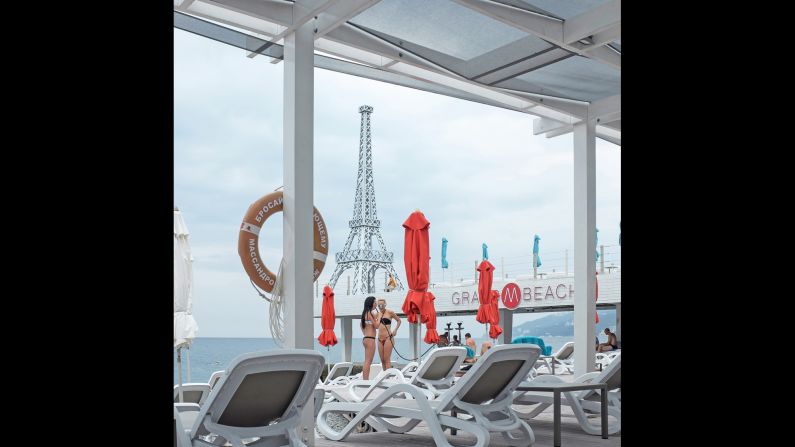
Women spend time at a private beach in Yalta, Crimea, earlier this year. Photographer Didier Bizet documented the tourism on the peninsula, which was annexed by Russia in 2014. "I would say that the tourism (in Crimea) is like 95% Russian people," Bizet said. "I did not meet any Italian, English, French. I was the only French guy in Crimea."

Various sights in Crimea reminded Bizet of Russia's past, from outdated cable car equipment to the clothing people wore.

People ride golf carts at a Crimean resort.

The Swallow's Nest castle is a Neo-Gothic monument and one of the most visited places in Crimea, Bizet said.

A child rides on a cable car.

People ride on a boat in the seaside resort of Gurzuf.

A woman checks her phone at a beachside lounge in Yalta.

A hotel in the city of Haspra, close to the Swallow's Nest castle.

Tourists use blankets to shield themselves from the wind as they return from the Ai-Petri peak in the Crimean Mountains.

People ride a boat to Yalta as they return from the Swallow's Nest castle. The boats are more expensive than the daily buses but faster, Bizet said.

The chicha pipe is replacing cigarettes on the beaches, Bizet said. Smoking is forbidden almost everywhere.

Booths are set up at a fair on Yalta's Lenin Promenade.

The Vorontsov Palace, at the base of the Crimean Mountains, has served as the backdrop for many Russian films.

A man enjoys a beverage while visiting the Ai-Petri peak.

Blind tests are among the activities offered at Atmosphera, an entertainment business that opened a year ago in Sevastopol, Crimea.

In the seaside resort of Gurzuf, beaches are often full, Bizet said. Everyone looks for an empty corner.

Sevastopol has been a naval port for centuries. The special status of the city makes it a strategic military base for Russia. Bizet said many tourists come to the bay to admire cruisers and old submarines.

